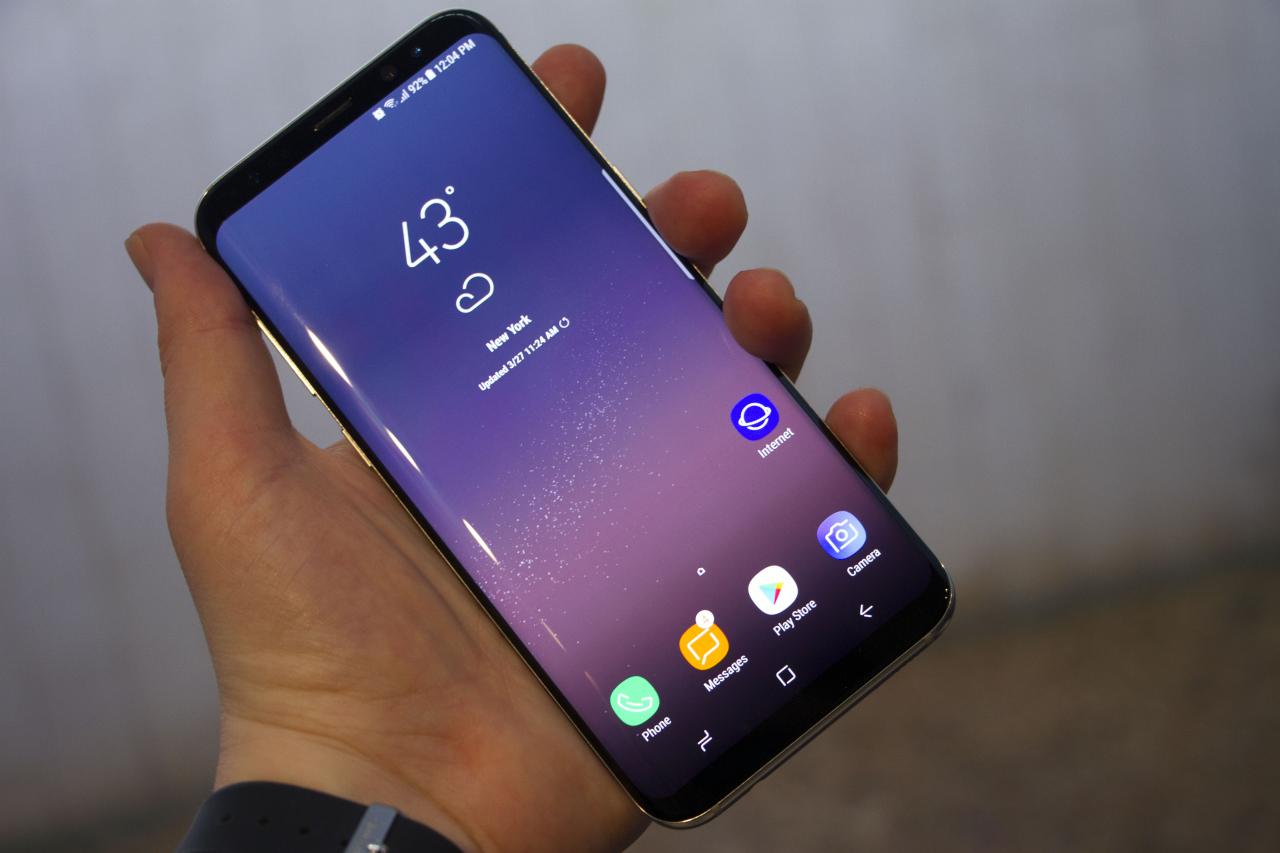Galaxy S 6 stands as a testament to cutting-edge technology, merging sleek design with powerful performance.
This flagship smartphone from Samsung showcases impressive features such as a stunning display, robust build quality, and a camera that redefines mobile photography. With its launch, the Galaxy S 6 not only set new standards in the smartphone arena but also captured the hearts of users with its intuitive interface and seamless experience.
Overview of Galaxy S6

The Samsung Galaxy S6, launched in April 2015, marked a significant shift in design and technology for the Galaxy series. This flagship smartphone was designed to compete with the best in the market, showcasing a blend of premium materials, cutting-edge features, and robust performance. With its impressive specifications and aesthetic appeal, the Galaxy S6 set a new standard for smartphones.
The Galaxy S6 is equipped with a 5.1-inch Super AMOLED display, featuring a resolution of 1440 x 2560 pixels that provides vibrant colors and stunning clarity. It is powered by the Exynos 7420 processor, coupled with either 3GB of RAM and options of 32GB, 64GB, or 128GB of internal storage. The device runs on Android 5.0 Lollipop, which is upgradable to later versions, bringing a fluid user experience along with Samsung’s TouchWiz UI. The rear camera boasts a 16 MP sensor with optical image stabilization, while the front-facing camera is 5 MP, perfect for selfies and video calls.
Design Elements and Build Quality
The design of the Galaxy S6 represents a departure from its predecessors, featuring a sleek and modern aesthetic that incorporates glass and metal. The front and back are made of Gorilla Glass 4, while the frame is crafted from aluminum, resulting in a premium feel that enhances durability.
An important aspect of the S6’s design is its thin profile, measuring just 6.8 mm in thickness. The device is available in multiple color options, including White Pearl, Black Sapphire, Gold Platinum, and Blue Topaz, allowing users to choose a style that suits their preferences.
This combination of materials and design not only enhances the visual appeal but also contributes to a more ergonomic grip, making the device comfortable to handle.
The placement of buttons and ports is thoughtfully executed, with the power button located on the right side, volume controls on the left, and the micro USB charging port situated at the bottom. The overall build quality of the Galaxy S6 is considered one of its strongest selling points, effectively balancing aesthetics with functionality.
History and Significance in the Smartphone Market
The Galaxy S6 holds a pivotal position in the history of smartphones, especially within the Samsung Galaxy lineup. It was released at a time when the smartphone market was witnessing fierce competition, particularly from Apple and other manufacturers. The S6 was not only a response to this competition but also a crucial step in redefining Samsung’s design philosophy.
With its launch, the Galaxy S6 signified a move towards a more premium product line, as Samsung sought to recover from the criticisms aimed at the plastic designs of earlier models. The introduction of features like wireless charging and enhanced camera capabilities positioned the S6 as a frontrunner in the flagship category.
“The Galaxy S6 was a turning point for Samsung, demonstrating that they could produce a flagship phone that competes with the best in terms of style and substance.”
The Galaxy S6 contributed significantly to Samsung’s sales, topping global smartphone sales charts shortly after its release. Its success laid the groundwork for subsequent models in the Galaxy S series, solidifying Samsung’s status as a leader in the smartphone industry.
Performance and User Experience

The Samsung Galaxy S6, released in 2015, has consistently been recognized for its performance capabilities and user-friendly experience. With its powerful hardware and refined software, the Galaxy S6 aimed to set a new standard in the smartphone market. This segment delves into the performance benchmarks of the device, user feedback on its operating system, and a thorough comparison of its battery life during intense usage.
Performance Benchmarks Compared to Competitors
The Galaxy S6 boasts impressive performance benchmarks that position it favorably against its contemporaries, such as the iPhone 6 and the HTC One M9. Equipped with the Exynos 7420 processor and 3GB of RAM, the S6 delivers seamless multitasking and robust application performance. In benchmark tests, the Galaxy S6 often achieves higher scores in both single-core and multi-core operations compared to its rivals.
- Geekbench 3 Scores: The Galaxy S6 scores around 1,500 in single-core tests and approximately 5,300 in multi-core tests, outperforming the iPhone 6’s single-core score of about 1,300 and multi-core score of around 4,600.
- AnTuTu Benchmark: The S6 frequently hits scores above 70,000, which is a strong performance indicator when compared to HTC One M9’s approximate score of 60,000.
“With the Galaxy S6, Samsung established itself at the forefront of smartphone performance.”
User Experiences with the Operating System
User feedback regarding the Galaxy S6’s operating system, which is based on Android Lollipop, reveals a generally positive experience characterized by smooth performance and a feature-rich interface. Samsung’s TouchWiz UI, while often criticized for being heavy, has seen improvements with the S6, resulting in a more responsive and enjoyable user experience.
The following aspects are frequently highlighted by users:
- Interface Smoothness: Users report that transitioning between apps and the home screen is fluid, largely due to the optimization of the TouchWiz interface.
- Software Updates: The Galaxy S6 received timely updates that enhanced performance and introduced new features, which has been well-received by the user community.
- Customization Options: Many users appreciate the level of customization available, allowing for personalization that suits individual preferences.
Battery Life and Performance Under Heavy Usage Conditions
Battery life is a critical factor in the overall user experience, especially during heavy usage scenarios. The Galaxy S6 is equipped with a 2,550 mAh battery, which has been a topic of discussion among users and reviewers alike. While it performs admirably under standard conditions, heavy usage can significantly impact battery life.
Analysis indicates the following characteristics:
- Screen-On Time: Users generally experience around 4 to 5 hours of screen-on time during heavy activities such as gaming and video streaming.
- Charging Speed: Fast charging capabilities allow the Galaxy S6 to recharge to 50% in approximately 30 minutes, providing convenience for users on the go.
- Power Management Features: The device includes settings that help manage background processes, contributing to improved battery longevity during heavy usage.
“The Galaxy S6’s battery performance marks a balance between power and efficiency, a critical aspect for modern smartphone users.”
Camera Capabilities
The Samsung Galaxy S6, launched in 2015, stood out for its remarkable camera capabilities that significantly enhanced the photography experience. With impressive specifications and innovative features, the Galaxy S6 offered users the ability to capture stunning images in various scenarios.
The Galaxy S6 features a 16-megapixel rear camera and a 5-megapixel front-facing camera. The rear camera comes equipped with an f/1.9 aperture, enabling better low-light performance while capturing sharp and vibrant images. Optical Image Stabilization (OIS) aids in reducing blurriness caused by shaky hands or movement, ensuring stable shots even in challenging conditions. The front camera, also with an f/1.9 aperture, is designed for clearer selfies and group shots.
Utilizing Camera Features for High-Quality Images
To maximize the potential of the Galaxy S6 camera, users can take advantage of its various features and modes. Understanding these settings can significantly enhance the quality of the captured images.
– Auto Mode: This setting automatically adjusts the camera for optimal exposure, making it ideal for everyday photography without requiring manual adjustments.
– Pro Mode: For photography enthusiasts, Pro Mode allows manual control over settings such as ISO, shutter speed, and white balance, providing the flexibility needed to experiment with different photography styles.
– HDR Mode: High Dynamic Range (HDR) mode is beneficial for scenes with high contrast, allowing the camera to capture details in both shadows and highlights by blending multiple exposures.
– Panorama Mode: This feature enables photographers to capture wide landscapes or large groups by sweeping the camera across the scene, creating a seamless panoramic image.
– Selective Focus: This mode lets users choose which part of the image to focus on while blurring the background, creating a professional bokeh effect.
Users can enhance their photography skills further by considering lighting conditions, utilizing the grid lines for better composition, and experimenting with different angles to capture the desired perspective.
Comparisons with Other Flagship Smartphones
In its time, the Galaxy S6 competed against several flagship smartphones, including the Apple iPhone 6 and the LG G4. While each device had its strengths, the Galaxy S6 camera was well-regarded for its swift launch time and exceptional image quality.
– iPhone 6: Though the iPhone 6 had an 8-megapixel camera, it still delivered impressive results. However, the Galaxy S6’s larger sensor and OIS provided a competitive edge, particularly in low-light situations.
– LG G4: The G4 boasted a 16-megapixel camera with advanced manual controls and excellent low-light performance. While comparable, the Galaxy S6 stood out for its user-friendly interface and faster image processing, making it more accessible for casual users.
Overall, the Galaxy S6’s camera capabilities positioned it as a strong contender in the flagship market, appealing to both casual photographers and enthusiasts alike. The combination of advanced technology, user-friendly features, and competitive performance solidified its reputation as one of the best smartphones for photography during its release period.
Software and Updates

The Samsung Galaxy S6 was introduced during a time when software performance was becoming as important as hardware specifications. The operating system and its updates significantly influenced user experience and device longevity. With Samsung’s commitment to providing timely updates and feature enhancements, the Galaxy S6 benefited from a range of software improvements throughout its lifecycle.
Samsung launched the Galaxy S6 with Android 5.0.2 Lollipop, showcasing a clean design and improved performance. Over the years, users received several updates that not only enhanced functionality but also addressed security vulnerabilities. Below is a timeline of the major software updates that the Galaxy S6 received:
Timeline of Software Updates
The Galaxy S6’s software journey is marked by significant milestones, reflecting Samsung’s commitment to maintaining its devices with up-to-date software.
- March 2015: Launched with Android 5.0.2 Lollipop.
- September 2015: Updated to Android 5.1.1, introducing improved performance and stability.
- February 2016: Android 6.0.1 Marshmallow update rolled out, introducing Doze mode and enhanced app permissions.
- August 2016: Security updates continued to be released monthly to address vulnerabilities.
- April 2017: Final major update to Android 7.0 Nougat, incorporating multi-window support and improved notification features.
The Galaxy S6’s software enhancements not only focused on new features but also included regular security patches, ensuring users benefits from improved safety from threats.
Features of the Operating System, Galaxy s 6
The operating system running on the Galaxy S6 was designed to deliver a seamless and fluid user experience. With each update, users experienced new features and better integration of Samsung’s proprietary applications.
Key features of the Galaxy S6’s operating system include:
- TouchWiz UI: Samsung’s custom interface provided a user-friendly experience, featuring colorful icons and a layout that enhanced accessibility.
- Multi-Window Support: Introduced in the Marshmallow update, this feature allowed users to run two apps simultaneously.
- Doze Mode: This power-saving feature automatically reduced background activity when the phone was idle, greatly enhancing battery life.
- Enhanced Security Features: Regular updates provided security enhancements, including fingerprint recognition and improved privacy settings.
These features, combined with Samsung’s regular updates, ensured that users could maximize their experience on the Galaxy S6.
Optimizing Performance through Software Adjustments
To maintain optimal performance on the Galaxy S6, users can implement several software adjustments that can significantly improve the device’s responsiveness and battery life.
Here are some methods for optimizing the performance of the Galaxy S6:
- Disable Unused Apps: Users can disable pre-installed apps that are not in use, freeing up system resources.
- Clear Cache Data: Regularly clearing the cache of apps can free up storage space and improve loading times.
- Manage Background Processes: Limiting the number of apps running in the background can enhance performance and save battery life.
- Utilize Power Saving Mode: Activating this feature can extend battery life by limiting performance during low battery situations.
By implementing these optimizations, users of the Galaxy S6 can ensure their device runs smoothly and efficiently throughout its lifespan.
FAQ Insights: Galaxy S 6
What are the key features of the Galaxy S 6?
The Galaxy S 6 features a 5.1-inch Super AMOLED display, Exynos 7420 processor, 3GB of RAM, and a 16MP rear camera.
How does the Galaxy S 6’s camera perform?
The camera excels in low-light conditions, providing vibrant images and features like optical image stabilization for clearer shots.
What operating system does the Galaxy S 6 run?
The Galaxy S 6 originally launched with Android Lollipop but can be updated to newer versions, improving functionality and performance.
Is the battery life of the Galaxy S 6 sufficient for heavy use?
The Galaxy S 6 provides decent battery life, but heavy usage may require more frequent charging due to its high-resolution display and powerful components.
What makes the design of the Galaxy S 6 stand out?
The Galaxy S 6 features an elegant glass and metal design that not only enhances its aesthetic appeal but also contributes to its premium feel.
The Samsung Galaxy S10 Plus is a flagship smartphone that impresses with its stunning display and powerful camera capabilities. Users appreciate its sleek design and performance, making it a popular choice for tech enthusiasts. Its features, combined with Samsung’s innovative technology, position it well in the competitive smartphone market, offering an all-around experience that caters to various users.
In the past, the Samsung Note7 faced significant scrutiny due to its battery issues, which led to recalls and negative publicity. However, this device was also known for its impressive display and stylus functionality, appealing to productivity-focused users. The lessons learned from the Note7 incident have since driven improvements in battery safety across the industry, shaping the future of smartphone design.